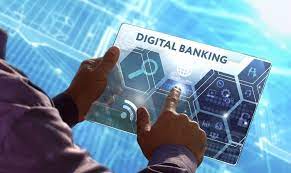A digital savings account is a type of bank account that allows you to deposit, store, and access your money digitally through a computer or mobile device. Unlike traditional savings accounts, digital savings accounts do not require visiting a bank branch to open an account or conduct transactions. Everything is handled online.
Benefits of Digital Savings Accounts
Digital savings accounts offer several key benefits over brick-and-mortar bank savings accounts:
- Convenience and Accessibility
The biggest perk of digital savings accounts is the ability to bank anytime, anywhere, with an internet connection. You can check balances, transfer funds, deposit cheques, and handle any other banking needs 24/7 through the account provider’s website or mobile app. This makes banking extremely convenient for busy people or those without easy access to a physical bank branch.
- Lower Fees and Higher Interest Rates
Digital savings account Offer higher interest rates because they have lower overhead costs. Many online savings accounts also have no monthly maintenance fees or minimum balance requirements.
- Enhanced Security Features
Digital savings account utilise advanced security measures like encryption, firewalls, multi-factor authentication, and fraud monitoring. While no system is 100% hack-proof, these safety protocols help protect against unauthorised access and cyber threats. Moreover, if you’re willing to open a zero balance account, it would be best to choose a well-known financial institution.
- Environmental Benefits
Digital savings account reduces paper waste and pollution caused by driving to bank branches. Managing your money online means less environmental impact over time.
Choosing the Right Digital Savings Account
When comparing digital savings accounts, pay attention to:
1. Interest Rates
This percentage indicates how much your money will grow each year thanks to interest payments from the bank. You want the highest annual percentage yield or APY possible. Just keep in mind that rates can change – some are fixed while others are variable.
2. Fees
Monthly maintenance and service fees are common, but digital savings account doesn’t charge you just for storing money with them. Banks tend to reimburse these fees since they don’t have their own cash machines. Definitely consider fees when deciding where to open your high-yield savings account.
3. Customer Service
Having knowledgeable support readily available is crucial whenever something comes up with your account. You want confidence that someone has your back. Do some investigating before you decide where to bank. Search for reviews that rate how helpful service teams are. You can even give them a test drive yourself. Call their support line to ask a question and see how friendly and available they are. Knowing your bank has your back matters a lot.
4. App Usability
Unlike old-school banking, digital savings relies on apps and websites. If the mobile app is slow, glitchy, or confusing, managing your money will be annoying. A good app lets you easily check balances, track monthly spending, transfer between accounts, deposit cheques, set up account alerts, and more. You won’t have to dig around to find key features. It should be intuitive and convenient. Test the digital experience before committing to ensure it provides what you need.
Security Measures to Follow for Digital Savings Accounts
Here are these security measures you need to take with a digital savings account:
1. Use Strong Passwords
Passwords should be complex and should have a random mix of letters, numbers, and symbols. Weak passwords are easier for hackers to guess. Go with a strong one.
2. Log Out When Done
Don’t stay permanently signed into the bank account. Make logging out a habit after finishing a session to prevent unauthorised access.
3. Beware Phishing Scams
Watch for suspicious emails asking to “confirm personal details”—they could be scammers pretending to be from the bank. Verify odd messages directly with customer service.
4. Verify Emails & URLs
Double-check that any links and bank website addresses match the exact domain to avoid fake sign-in pages from fraudsters.
5. Only Use Secure WiFi
Public, unencrypted networks make it easier for hackers to steal data. Stick to personal Wi-Fi and those that require passwords for banking.
6. Monitor Account Activity
Check transactions to catch unauthorised charges or transfers immediately before more damage occurs.
7. Set Up Alerts
Ask the bank to text or email for certain account activity so customers stay informed of transactions.
Conclusion
From higher yields to enhanced convenience, digital savings accounts offer noticeable advantages over traditional savings accounts. Just thoroughly research any online bank before opening an account and depositing your hard-earned money. Checking reviews, comparing interest rates and fees, and understanding security measures will help you find the right fit. With a little legwork upfront, you can enjoy seamless digital banking and maximise savings over the long run.
